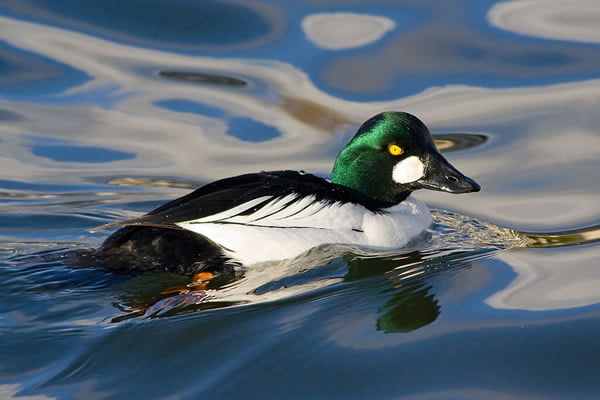Lead Institution(s): Utah State University
Collaborator(s): Utah Division of Wildlife Resources Great Salt Lake Ecosystem Project, Utah Division of Water Quality, Utah Verinary Diagnostic Library, Utah State University
Focal Species: Common Goldeneye (Bucephala clangula)
Project Description: The Great Salt Lake (GSL) is the fourth largest terminal lake in the world and is an important region for breeding and migratory waterbirds and wintering common goldeneye. Recently, water and sediment samples from the GSL revealed high concentrations of mercury and selenium and methylmercury concentrations in GSL water samples were among the highest ever recorded in surface water by the USGS Mercury Laboratory, and mercury concentrations identified in a 2005 reconnaissance investigation were the highest among published results for common goldeneye. Determining trace element concentrations in common goldeneye wintering on GSL presents a potentially unique opportunity to understand physiological relationships with high contaminant concentrations (e.g., mercury) in a population of wild migratory sea ducks. Objectives of this project were: 1) Document hepatic inorganic trace element concentrations including arsenic, boron, cadmium, copper, lead, mercury, selenium, and zinc in common goldeneye wintering on GSL; 2) Evaluate temporal variation in hepatic trace element concentrations in common goldeneye wintering on GSL; 3) Evaluate relationships between hepatic trace element concentrations and measure of physiological condition (e.g., lipid, protein, and mineral reserves; body, spleen, pancreas masses) of common goldeneye with respect to temporal variation, sex, and age class.
SDJV94 Final Report
Related Publications
Vest, J.L., Conover, M.R., Perschon, C. et al. Trace Element Concentrations in Wintering Waterfowl from the Great Salt Lake, Utah. Arch Environ Contam Toxicol 56, 302–316 (2009). https://doi.org/10.1007/s00244-008-9184-8
Vest, Josh L., “Winter Ecology of Waterfowl on the Great Salt Lake, Utah” (2013). All Graduate Theses and Dissertations. 2051. https://digitalcommons.usu.edu/etd/2051
